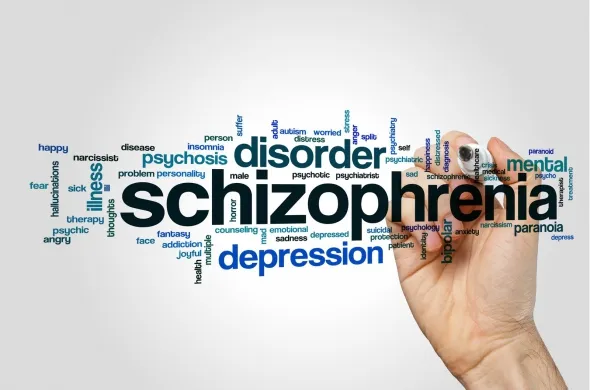Schizophrenia is one of the most misunderstood mental health conditions in our society. Surrounded by stigma, myths, and media stereotypes, it’s often portrayed in ways that deepen fear and confusion rather than foster understanding. But here’s what’s most important to know: Schizophrenia Explained isn’t a life sentence. With the right support, treatment, and compassion, people living with schizophrenia can lead meaningful, hopeful, and fulfilling lives.
In this article, we’ll walk through what schizophrenia really is, and isn’t, what it feels like, and how it’s treated. Whether you’re someone living with the condition, a loved one, or simply seeking to understand, we hope this brings clarity and compassion to a topic that deserves both.
What Is Schizophrenia? Let’s Start with the Basics
Schizophrenia Explained begins with a simple but crucial idea: schizophrenia is a chronic brain disorder that affects how a person thinks, feels, and perceives reality. It is not a “split personality,” as is often mistakenly believed. Rather, it involves disruptions in thought processes, emotions, and sensory experiences.
While the exact cause isn’t fully known, research suggests that genetics, brain chemistry, environmental stressors (such as trauma or substance use), and neurodevelopmental factors may all play a role. It’s a medical condition, not a character flaw, a personal failure, or something anyone “chooses.”
Recognizing the Symptoms: Beyond the Stereotypes
Symptoms of schizophrenia vary widely from person to person and often emerge in early adulthood. They’re generally grouped into three categories:
1. Positive Symptoms:
These refer to experiences that are “added” to a person’s reality. They include:
- Hallucinations: Hearing, seeing, or sensing things that aren’t there.
- Delusions: Strongly held beliefs that aren’t based in reality.
- Disorganized speech or behavior: Trouble organizing thoughts, which can affect communication.
2. Negative Symptoms:
These involve a “loss” of typical function or emotion, such as:
- Reduced emotional expression (flat affect)
- Loss of interest in everyday activities
- Social withdrawal and difficulty starting or sustaining tasks
3. Cognitive Symptoms:
These affect thinking abilities, like:
- Trouble focusing or paying attention
- Memory challenges
- Difficulty making decisions or solving problems
It’s important to remember: a person with schizophrenia is not defined by these symptoms. With support, they can learn to manage them and nurture their strengths, interests, and relationships.
How Schizophrenia Is Diagnosed and Treated
There is no single test for schizophrenia. Diagnosis is made by mental health professionals, usually psychiatrists, through detailed clinical interviews, observation, and sometimes medical tests to rule out other conditions.
Treatment is most effective when it’s personalized, continuous, and holistic. A comprehensive approach often includes:
- Medication: Antipsychotic medications can help manage symptoms, especially hallucinations and delusions. It may take time to find the right type and dosage, and sticking with treatment is key.
- Therapy: Cognitive-behavioral therapy (CBT), family therapy, and psychosocial interventions help individuals develop coping skills, improve communication, and strengthen relationships.
- Support Services: Community support, vocational training, and peer networks provide practical help and reduce isolation.
Recovery looks different for everyone. For some, it means symptom remission. For others, it’s about building a life filled with purpose, connection, and dignity, even while managing symptoms.
How You Can Help: Breaking Stigma with Compassion
Stigma is one of the biggest barriers to recovery for people with schizophrenia. You can make a difference by:
- Educating yourself and others – Share accurate information. Correct myths when you hear them.
- Using respectful language – Avoid labels like “crazy” or “psycho.” Use person-first language: “a person with schizophrenia,” not “a schizophrenic.”
- Listening without judgment – Sometimes the most powerful support is simply being present and open.
Family and friends play an essential role in encouraging treatment, offering emotional support, and helping their loved one stay connected to their community.
A Message to Those Living with Schizophrenia
You are not your diagnosis. You are a person with dreams, strengths, and the capacity for growth. Recovery is a journey, one that may have challenges, but also moments of hope, connection, and resilience.
It’s okay to ask for help. It’s okay to need support. And it’s more than okay to define what a meaningful life looks like for you.
In Summary: Understanding Is the First Step to Hope
Schizophrenia Explained is about replacing fear with facts, judgment with empathy, and isolation with inclusion. With early intervention, tailored treatment, and a supportive community, people with schizophrenia can and do thrive.
Let’s continue to learn, support, and advocate, for better mental health for everyone.
If you or someone you know is struggling, please reach out to a mental health professional. You don’t have to navigate this alone.
Disclaimer: This content is for educational purposes only and is not a substitute for professional medical advice, diagnosis, or treatment. Always seek the advice of your qualified mental health provider with any questions you may have.
